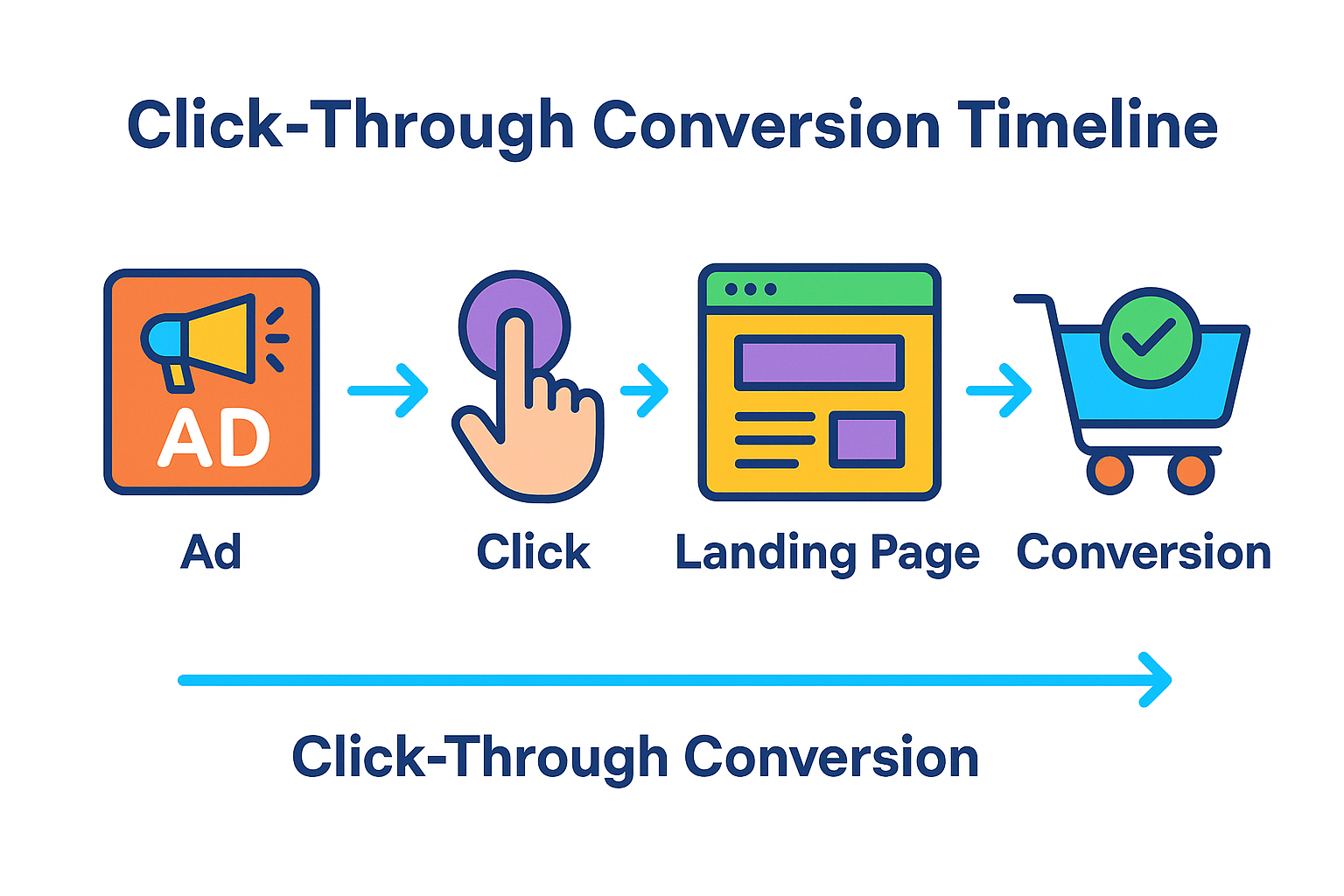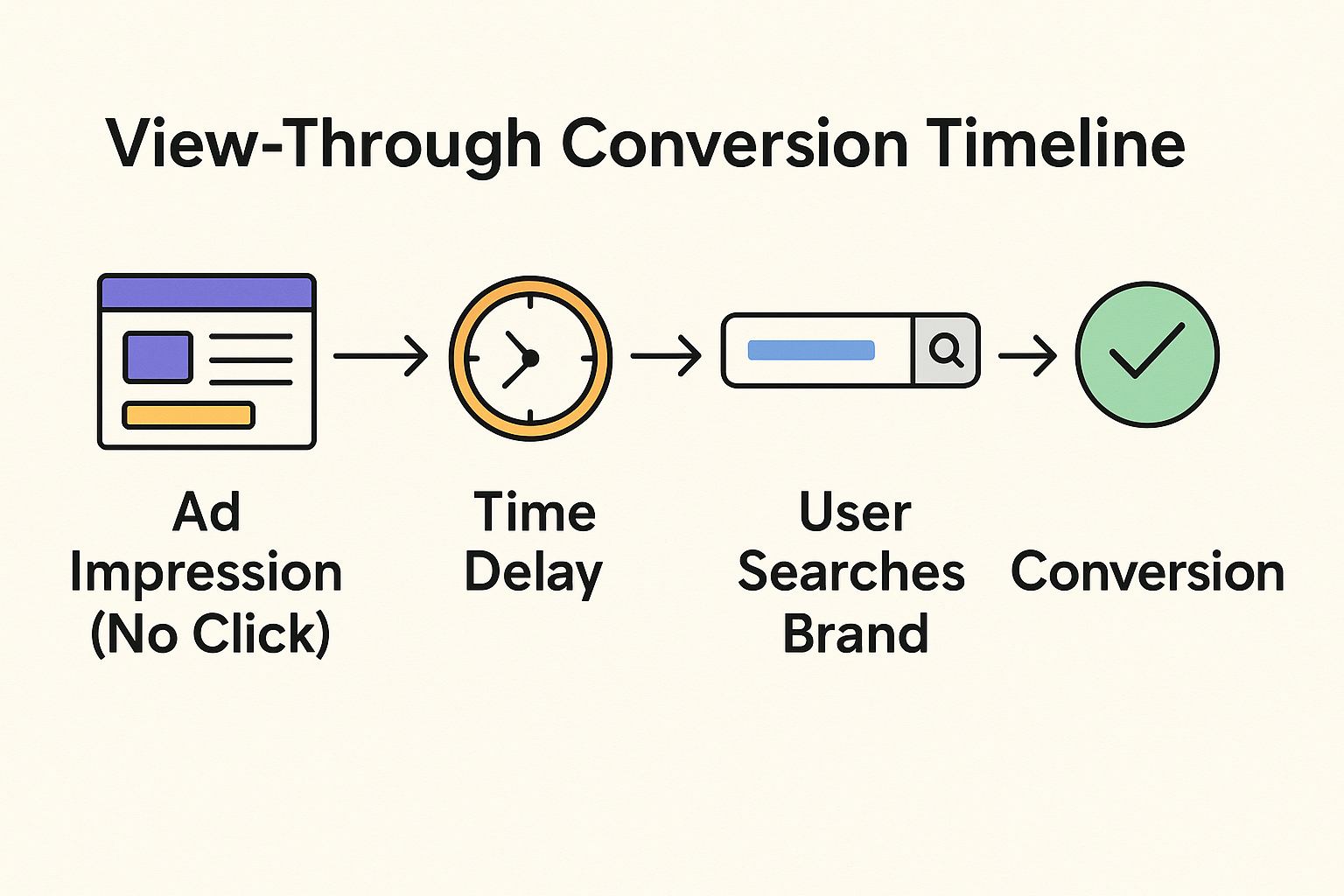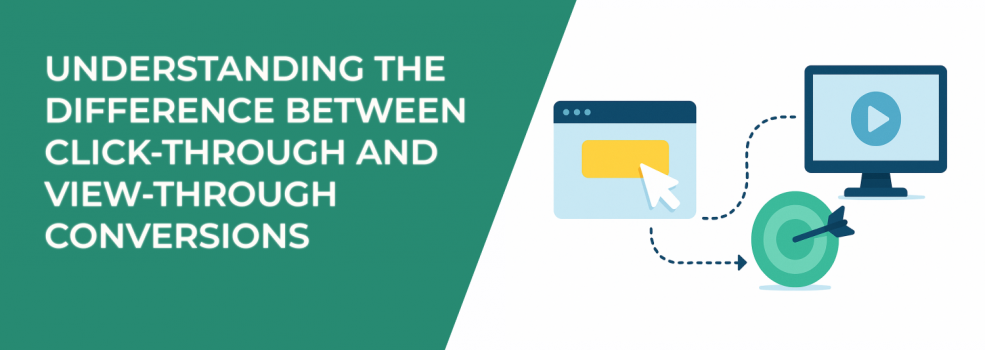When you’re running digital ads, one metric tends to hog the spotlight: the click.
Click-through rate (CTR), cost per click, click-to-conversion rate — they’re all metrics built around a single action. But clicks aren’t the whole story. And if you’re making decisions based only on them, you’re likely missing valuable insights about how your ads actually influence behavior.
Let’s unpack a crucial distinction that many advertisers still overlook: the difference between click-through conversions and view-through conversions.
What’s a Click-Through Conversion?
Click-through conversions are the most straightforward to understand. A user sees your ad, clicks it, and then takes an action — like making a purchase, signing up, or downloading something — within a defined attribution window.

It’s linear, traceable, and makes performance easy to report. That’s part of why marketers often over-prioritize them.
But here’s the twist: high CTR doesn’t always mean high conversions. In fact, if your ads are getting tons of clicks but few purchases, you may be optimizing for the wrong behavior. If that sounds familiar, this guide on how to solve low click-through rates on Facebook ads will help you recalibrate your creative and targeting.
The main value of CTCs is that they show clear, short-term intent. But not every customer is ready to buy after one click — which brings us to the other side of the equation.
What’s a View-Through Conversion?
View-through conversions happen when someone sees your ad but doesn’t click — then later takes a desired action.
Let’s say a user scrolls past your ad on Facebook, doesn’t engage, but remembers your brand and Googles you the next day. If they convert within your attribution window (commonly 1, 7, or 28 days), that’s a view-through conversion.

VTCs are critical in campaigns where the user journey is longer or more passive — like display ads, video content, or top-of-funnel campaigns. If you're only looking at click-through conversions, these contributions stay invisible.
Think of it like this: just because someone doesn’t walk into the store after seeing your billboard doesn’t mean the billboard didn’t work.
For advertisers running broad awareness campaigns or retargeting efforts, factoring in view-through data gives you a much clearer picture of ad influence. And if you're not sure how much visibility your ad is getting in the first place, it may be due to delivery issues — this breakdown of why ad sets might get zero impressions is worth a read.
Why This Difference Actually Matters
Choosing which conversion type to prioritize depends on what you’re trying to do.
Want to optimize a high-intent Google Ads campaign? Click-through data makes sense. Trying to evaluate the impact of a video campaign that boosts brand awareness? You’ll want to track view-throughs.
The problem is that many platforms — and agencies — still focus on CTCs by default. This can undervalue cold audience targeting, video views, or upper-funnel campaigns that plant seeds instead of driving instant action.
If you're struggling with Facebook ads that seem to stall mid-funnel or aren’t converting despite solid engagement, the issue may not be your creative. You might just be tracking the wrong outcomes. Take a look at this article on why Facebook ads don’t convert for a deeper diagnostic approach.
How to Use Both Conversions Intelligently
You don’t have to choose between the two. In fact, the smartest advertisers track both — but apply them based on campaign type and intent.
Here’s a simple framework:
-
Use click-through conversions to measure direct response (e.g. ecommerce sales, lead forms, app installs).
-
Use view-through conversions to evaluate branding impact, video awareness, and remarketing efforts.
-
Regularly segment your results — don’t lump everything into one “conversion” bucket.
If you’re launching campaigns for the first time and still unsure how to assign the right objective, this article on Meta ad campaign objectives is a must-read. Getting the objective wrong means your data — including conversions — won’t tell the full story.
A Few Tips to Improve Attribution Clarity
Here’s how to get better clarity from your conversion data:
-
Set realistic attribution windows based on your sales cycle.
-
Compare channels — email, social, paid search — and see which ones over- or under-report view-throughs.
-
Use UTM parameters and first-party tracking tools to catch assisted conversions.
-
Validate view-through data with post-purchase surveys or branded search volume spikes.
Ultimately, the best metric depends on what action you want and how your audience behaves. A high CTR might look great in a report — but a well-timed view-through conversion could be the real MVP of your campaign.
Final Thoughts
Don’t mistake visibility for performance. And don’t assume that what gets clicked always drives results.
Whether you’re running retargeting ads, scaling cold traffic, or just trying to improve your Facebook campaign CTR, knowing how to measure conversions properly could be the difference between a good campaign — and a great one.

